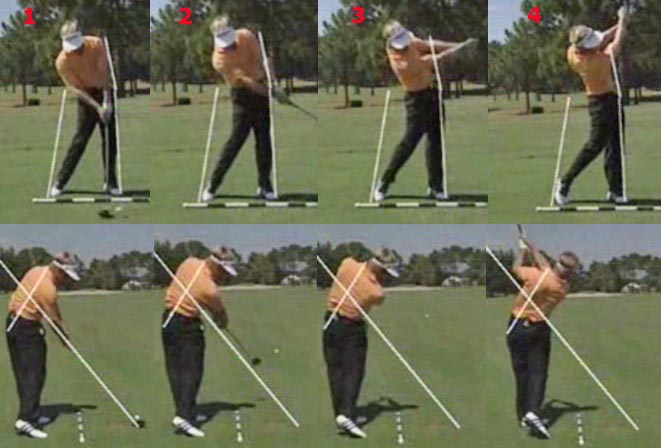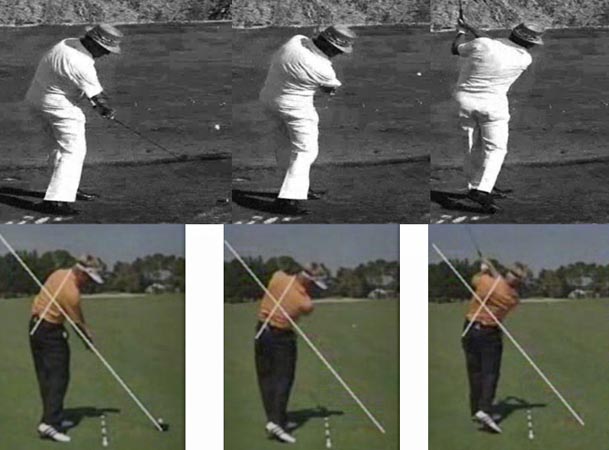The right elbow bends on the backswing, when the left arm
swings across the chest.
The left elbow will fold when the opposite happens.
In some swings:
Hogan, Appleby, Tom Bartlett, Lindsey Gahm
The left arm DOES NOT SWING ACROSS THE CHEST early past impact. The left shoulder moves up and back and the left arm can stay long.
That's it.
Most people need to LEARN how to swing their arms from their shoulder sockets.
If you do this, with minimal forward turning of the upper body, AND MOST IMPORTANTLY THE RIGHT AMOUNT OF FINISH SWIVEL, the left elbow will fold as pretty as pie.
What would ya'll do without me?




